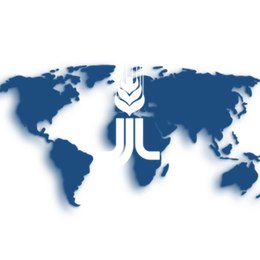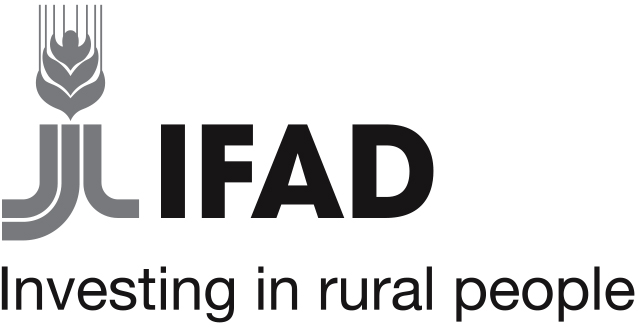Developing policies and programmes on spate irrigation
"Flood water channelled to fields is stored as soil moisture to grow crops, even during dry seasons"
BACKGROUND
The rural poor suffer from low and unreliable yield due to unpredictable floods, frequent changes in the river beds and improper field water management. Spate irrigation, a form of flood-based farming, is an irrigation system that diverts water from perennial rivers during floods. By storing moisture in the soil profile, spate irrigation system provides an effective solution at times of water shortage.
WHAT’S INVOLVED
Improved field water management
Delicate control of spate flows can irrigate crops and recharge groundwater at times of water shortage.
Knowledge exchange
Knowledge-sharing workshops can facilitate the exchange of practical experience among farmers and spate irrigation professionals.EXPLORE THIS SOLUTION
This solution can offer
- The mainstreaming of spate irrigation systems in policy and investment programmes; and
- Strengthened knowledge networks involving spate irrigation professionals and farmers

Countries involved
Ethiopia, Pakistan, Sudan, Yemen
Project partners
Spate Irrigation Network Foundation (SpN), MetaMeta, UNESCO-IHE
Project dates
2011-2015
Share this solution
Bookmark this solution
BookmarkShow Full Solution
Summary
Prevalent in West Asia, the Middle East and parts of Africa, spate irrigation is a water resource management system in which ephemeral floods are diverted for irrigation. Although spate irrigation can promote livelihood security and rural development by stabilizing food production, it has been overlooked as good practice. IFAD, together with UNESCO-IHE, implemented this grant to develop policies and programmes on spate irrigation system in Ethiopia, Pakistan, Sudan and Yemen.
Challenge
The food security of the most vulnerable sectors of the rural population depends on the proper use of land and water resources. Poor water management practices, combined with unpredictable natural factors such as floods and changing river beds, can lead to water shortages that greatly limit agricultural production.
Currently, spate irrigation takes place mainly in areas with great uncertainty and high risks of crop failure. When practiced properly, spate irrigation can help prevent low and unreliable yields due to water shortages. However, spate diversion structures are often limited, neglecting practices to conserve soil moisture. Spate irrigation is not part of any educational programme, so technical know-how and documented good practices are limited. Despite its potential, spate irrigation has been passed over in policy support, investment and innovation.
Solution
Unique to semi-arid environments, spate irrigation systems divert water from perennial rivers during floods to irrigate crops using structures such as diversion canals and bunds. With spate irrigation, moisture is captured in the soil profile and in shallow aquifers, proving to be sufficiently more cost-effective than the widely used reservoir storage method. The per capita reservoir capacity is especially low in Africa, highlighting the potential of spate irrigation. Floodwater stored as soil moisture is extremely beneficial for growing crops during the dry season.
Moreover, spate systems go beyond crop irrigation and support comprehensive agro-economies such as agro-forestry, livestock and groundwater recharge. Spate irrigation also plays an important role in encouraging settlement in lowland areas, which traditionally have been sparsely populated and largely utilised only by agro pastoralists.
With a view to developing policies and programmes on spate irrigation system, the grant aimed to:
- establish and strengthen the knowledge networks in the four target countries
- conduct innovative action research activities that can be scaled up
- incorporate spate irrigation into programmes of universities and agricultural colleges
- create a global inventory of spate irrigation and flood-based farming systems
Results
The project strengthened the capacity of 300 spate irrigation professionals and around 100 spate irrigation farmer communities. The project met all of the set targets by September 2015, achieving the following results:
- Spate irrigation has been mainstreamed in policy and investment programmes.
- Pakistan: a US$300 million spate irrigation investment was recommended in the Water Sector Task Force Report
- Ethiopia: a flood-based farming investment plan was endorsed by the Ministry of Water Resources and Irrigation, and 20,000 hectares of land was earmarked for spate irrigation development in the Tigray Region Growth and Transformation Plan
- Yemen: spate irrigation was featured explicitly in the Irrigation Sector Policy for the Ministry of Agriculture and Irrigation
- Sudan: a spate irrigation policy note was endorsed by the Ministry of Water Resources, Irrigation and Electricity
- Six universities in three countries incorporated spate irrigation into their courses
- 25 innovative and scalable action research initiatives responded to key technical, institutional and socio-economic problems.
- Knowledge products were spread through farmer-to-farmer knowledge-sharing workshops and the Spate Irrigation Network (SpN) website, including: 42 practical notes and overview papers; 30 educational videos including in local languages; and comprehensive guidelines for spate irrigation.
Lessons Learned
Concentrating on well-defined or niche topics improved the internal coherence of the project, while collaborating with a large network of practitioners and professionals as well as youth helped develop critical local presence and ensured uptake of new ideas along with research outputs.
Because spate irrigation systems were practiced in remote areas, continuous physical presence and engagement with stakeholders was challenging and required huge commitments of time and finance. In Pakistan, for instance, these regions were located in the most marginalised and socially low-ranking districts. Moreover, the farming communities in Pakistan, Yemen and Sudan are traditionally quite patriarchal, limiting access to women spate irrigators and therefore risking marginalization of the project’s gender focus.
Next Steps
Spate irrigation falls under a larger category of flood-based farming in agricultural production systems. While flood-based systems have often been overlooked as a whole, countries have managed this system in their own distinctive ways. Exchanging various practical experiences among countries will further develop the capacity and knowledge pool of flood-based farming.
The Spate Irrigation Network Foundation was registered in August 2014, after the grant helped the network’s membership grow from 100 to 700. This Foundation plans to be a self-standing organization with the objective of convening farmers and practitioners as well as collaborating with stakeholders in the implementation of projects.
Solution Video
Solution Document Downloads
Solution Additional Resources
Flood-based Livelihoods Network Foundation - Resource documentsLast update: 28/01/2019


